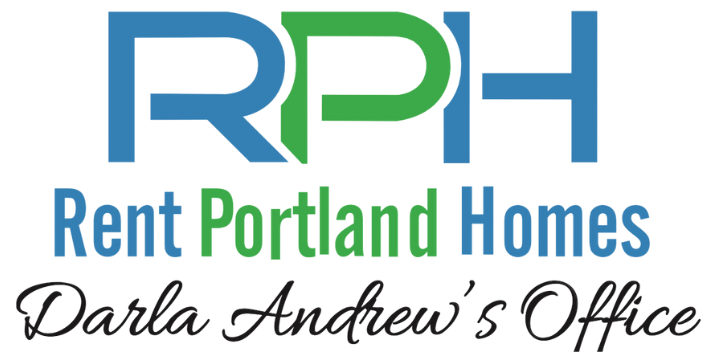As a self-managing landlord, your first question when turning a property into a rental is simple: how profitable will this new investment be? Whether you’re planning to turn your property into a rental or just wondering whether it’s a good idea in the first place, performing a neighborhood and property analysis is a crucial first step to determining whether a rental will be a good investment.
While seemingly straightforward, a property’s profitability depends on several factors, from amenities included to the state of the neighborhood. Some of these are factors you can modify, such as the cost of rent and the property’s condition. Many others, however, are totally beyond your control. What’s more, the current rental market, proximity to public transit, and nearby employment opportunities all influence your ability to find tenants, set higher rents, and ultimately make a profit.
At Rent Portland Homes by Darla Andrew, conducting a thorough neighborhood and property analysis is an integral part of helping our clients max out their return on investment. Here are a few of our expert tips to help you put together an analysis for your rental property.
Take Stock of all Relevant Factors
One of the chief benefits of conducting a neighborhood and property analysis is that it helps determine your highest yield — aka, the highest rent you can charge. Many DIY landlords struggle to hit the sweet spot of charging the perfect rent. Too little, and you’re losing out on profits. Too much, and you’ll scare away potential tenants who’d rather get a better deal. By performing a neighborhood analysis, you’re not just taking a wild guess at what to charge in rents. Instead, you’ll be basing it off a solid foundation of data.
Start by examining the neighborhood around your property. Look for indicators to tell what kinds of tenants your rental is likely to appeal to and what you’ll be able to charge. Here are some questions to ask about the neighborhood surrounding your property:
- Is the area’s population currently growing, thus driving up the demand for housing?
- What’s the average family size in the area? Are tenants likely to want a quiet studio or need a lot of room for kids?
- What’s the average age distribution in the area? Does the population tend to skew towards college students, working professionals, or families?
- What’s the economic level in the area? Consider the average personal income range, credit scores, and stability of income.
Sometimes looking for context clues can help you determine the types of tenants your rental will attract. If the area is in a desirable school district and a safe neighborhood, it will likely appeal to families with children. If it’s close to a large employer, your rental will be a tempting prospect for its employees.
Look at the Neighborhood
Once you’ve determined what kind of tenants will likely be interested in your rental, it’s time to take a look at the neighborhood itself. Physically walking or driving around the area is a great way to get a feel for the neighborhood’s character. Try to envision yourself as a prospective tenant visiting the site for a walk-through of your property. What will be going through their head as they round the block?
Take a look at the buildings in the neighborhood. Are they well-maintained and in good condition? Are there many vacant or abandoned properties nearby? Do they appear to be cared for with love, or are the signs of wear obvious? Are there more multifamily buildings, or are they mostly single-family homes? Are the buildings new or old?
Next, consider the area’s amenities. Research what kind of public transportation is easily accessible from your property and any appealing local amenities. Make a note of recreation opportunities, shopping centers, grocery stores, and local schools. Lastly, investigate the breadth and growth of local employment opportunities. You can also use all the neighborhood’s positives as appealing details in the listing for your property when you’re ready to start marketing it.
Consider the Local Market
Once you’ve completed your neighborhood analysis, it’s time to begin your market analysis. Pick out three to six nearby properties similar to your own. Take note of the following factors to begin:
- Location
- Age of the building
- Condition and appearance
- Number of bedrooms
- Square feet per unit
- Monthly rent
- Rent per square feet
- Location rating
- Utilities
- Amenities
Once you’ve collected this information, it’s time to find the rent per square foot for each unit. To do this, take the monthly rent and divide by the number of square feet in the unit in question. This is a good starting point to determine how your unit will hold up to the competition. The last step for setting your rent is to fill out the same information for your property and compare it to the rest of the market. By noting your property’s details compared to the others, you’ll have a detailed map of your property’s strengths and a good idea of how to market them.
Of course, the work isn’t over once you’ve completed your neighborhood and property analysis. Once your tenants have moved in and started paying rent, it’s essential to keep a detailed account of your monthly income and expenditures so that you can calculate your property’s return on investment (ROI) and track future tax deductions. If you performed a thorough neighborhood and property analysis beforehand, you should have a reasonable estimate of your ROI. But of course, managing a rental property is a tough job, and staying on top of everything can be challenging. If you’re feeling daunted by the amount of work necessary to keep your finances in good order, you may want to streamline your business by hiring a property manager.
Our Team is Here to Help
Keeping up with collecting rent, finding tenants, conducting maintenance, and all of the other duties of being a landlord takes enough time on its own. When you add complicated finances and market analysis to the equation, it can start to feel like the effort exceeds the rewards. At Rent Portland Homes by Darla Andrew, we take care of the stressful and time-consuming aspects of property management while helping you maximize your ROI.
Our dedicated team of experts has years of experience in the Portland rental market and can help you navigate the complicated world of property management. We ensure your rental is priced for maximum profit, market your rental to help you find the best tenants, and take care of everything from maintenance to collecting rent. If you’re ready to take a step back and let us leverage our skills to help your rental property thrive, contact us by phone text at (503) 515-3170 any time, or reach out through our website’s contact form.


Recent Comments